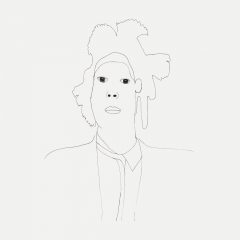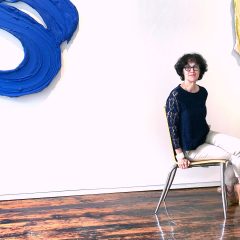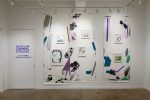It’s probably every artist’s dream to deliver a surprise to a skeptical art institution and come away with kudos and love. Astrid Bowlby’s Snag at the Michener Museum, a jaunty 3D Dejeuner Sur l’Herbe minus the figures does just that. Bowlby sited the mini-landscape on the floor, picnic cloth-like, in the middle of Michener’s Putnam-Smith gallery of regional landscapes. The museum wanted it elsewhere. Once installed, the colorful, tactile, by turns organized and messy piece sits there like it was meant to be.
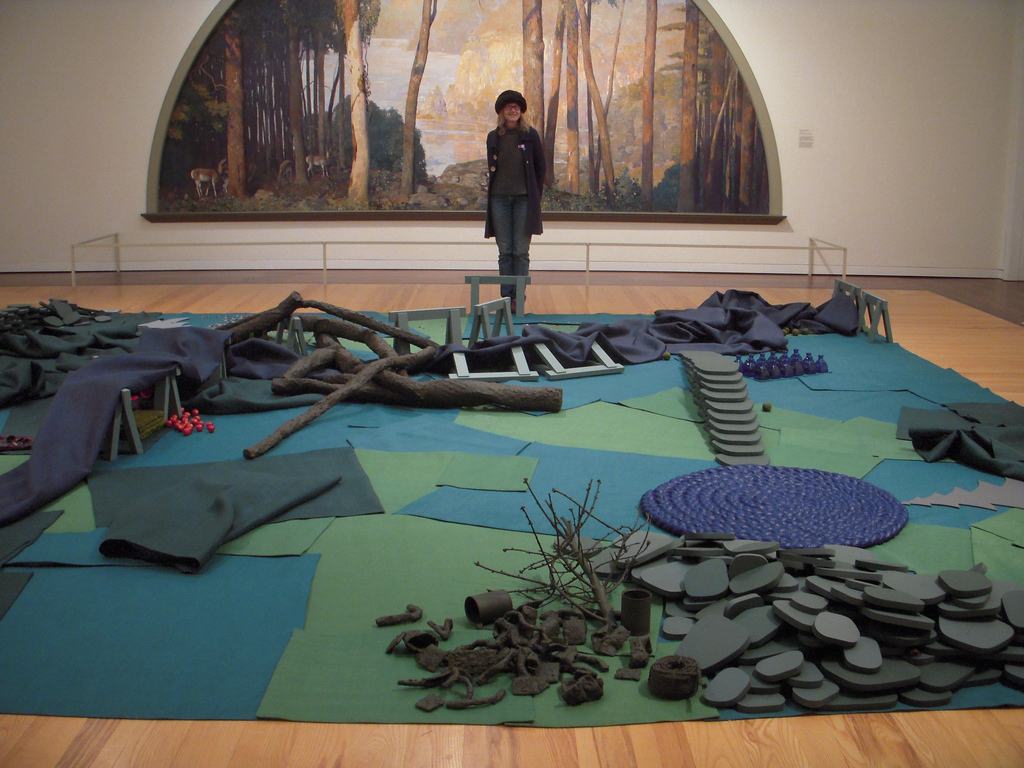
I met the artist at the museum last month for a chat about Snag and to catch up with what else she is up to.
As we walked around the large piece, visiting students came up with their teacher and oohed and aahed. Puzzling out how it is a landscape becomes an important part of looking at it. While it’s pretty clear that the blue-black cloth that ripples corner to corner is a river, other things are not so clear. The mini sawhorses? Bowlby calls them saw ponies. They not only indicate the hand of man on the environment but they may be stand-ins for 4-legged animals – why not? The piece is whimsical. There are colored glass beads in one corner where the river cloth bunches up. They catch the light nicely and Bowlby told me they were to her like the spray or foam of water hitting the rocks at an active part of the river. To me they were deer droppings (fairy droppings?) of creatures crossing the river.
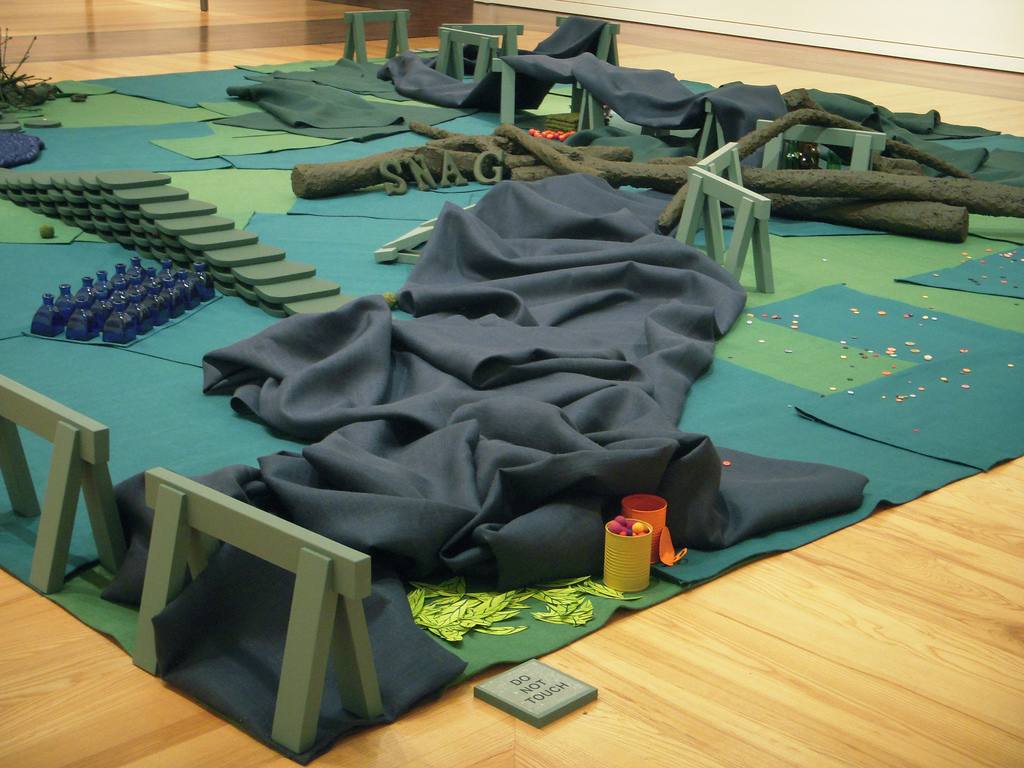
Made of sumptuous and unexpected materials — cloth, glass, paper mache, buttons, cut wood and some craft store matter, the landscape on the floor is so well loved that guards, educators and viewers feel ownership. And while “Do Not Touch” tiles sit on the floor at Snag’s four corners, some couldn’t resist. Bowlby has found some of her sprays of tiny buttons or colored glass beads moved around. It’s no wonder. The piece is irresistible — imbued with a kind of materials’ magic. You want to climb into it or if not that, just cop a feel to see what the pieces are made of. Bowlby has left the changes (they’re minor) — a mark of active participation by the public in this openly inviting work.
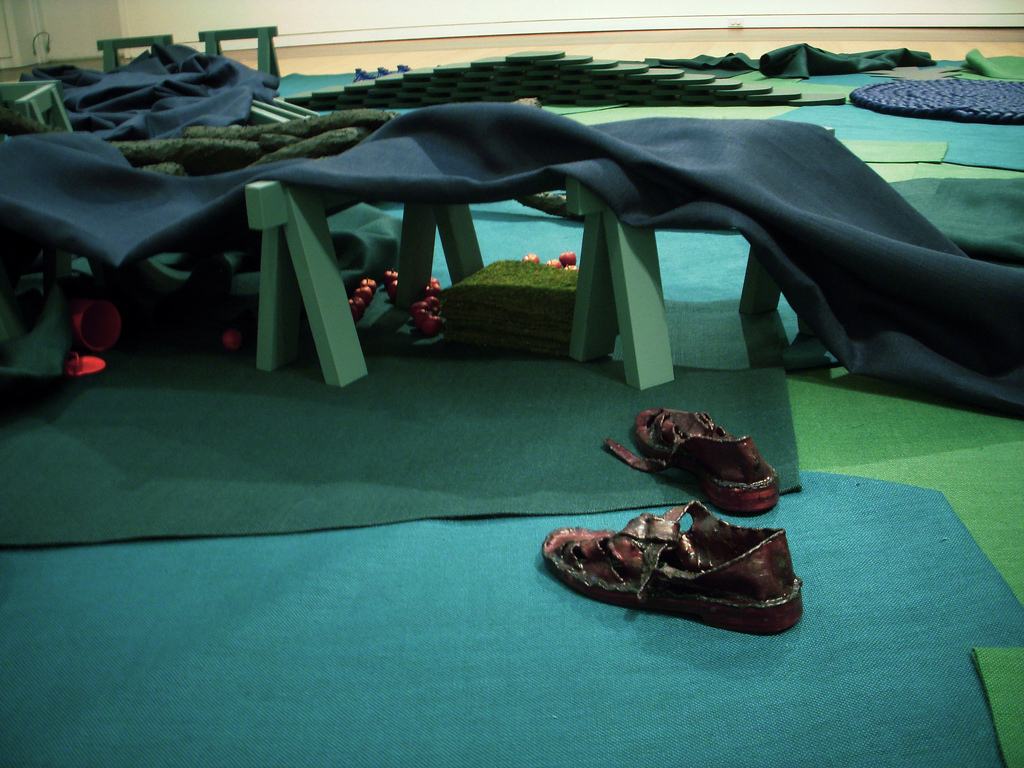
Some of what’s in the piece is hand made; some is purchased. The most virtuosic piece of hand-made is the sandals, huge in this faux mini landscape, sitting beside the river like a giant’s pair left when she waded in. Made of paper, wax and pigment, and based on a pair of her own, the sandals are one of the small pleasures in this work that builds up part by part, an aggregation of small charms.
Of course the whole thing is a faux world with everything man-made and nothing natural at all. But that’s really no different than an oil painting on canvas which is made of completely manufactured bits put together to create an illusion. Snag’s illusion, its ambiance, its message is one of joy. There’s joy in the artistic mess-making –the creation of order and beauty from unorganized material. It’s a celebration of nature and a commentary on manufactured objects that make their way into the natural world, sometimes as needed infrastructure to help navigate the earth, other times just litter.
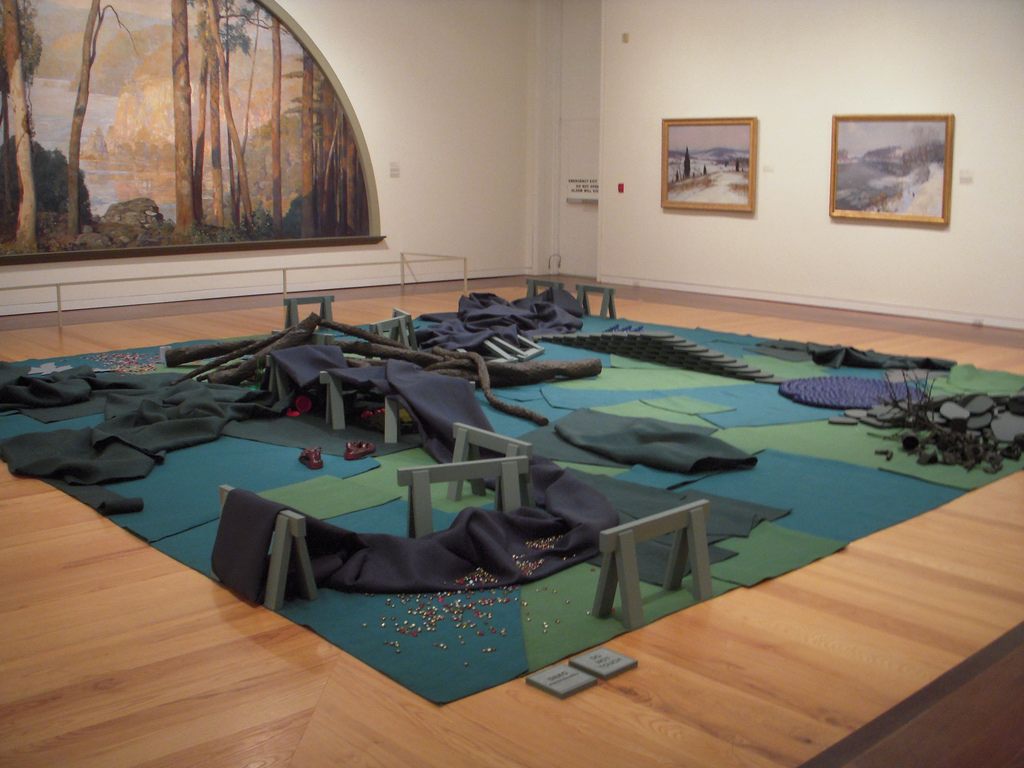
If nature is the biggest organizer of space and maker of mess (tornadoes and snowstorms that create havoc, earthquakes that heave up the earth the result of so much stretching and yawning), artists, too organize space and make messes. They create their own quakes, heaving and throwing materials around, ok, sometimes delicately, making organized events on canvas or in 3D, as with Snag. It’s a great piece and would be a wonderful addition to the Michener’s collection of landscape works.
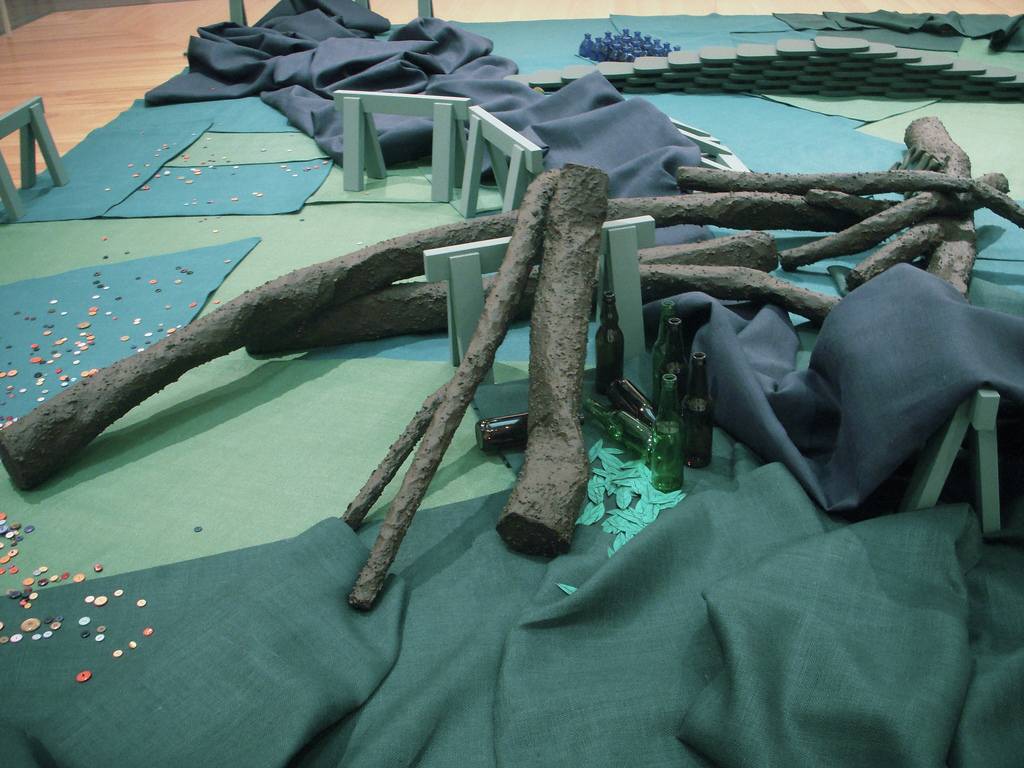
After Snag
Bowlby had a very busy 2010 — in addition to teaching at University of the Arts, Snag at Michener coincided with her solo show at Gallery Joe, both at the end of the year. She’s ready for a change in the studio, saying she wants to play with color (most of her works on paper are black and white). But before she moves away from B&W, this Spring will give her a chance to do a big black and white cut paper drawing installation as part of an artist residency at the University of South Maine, her alma mater.
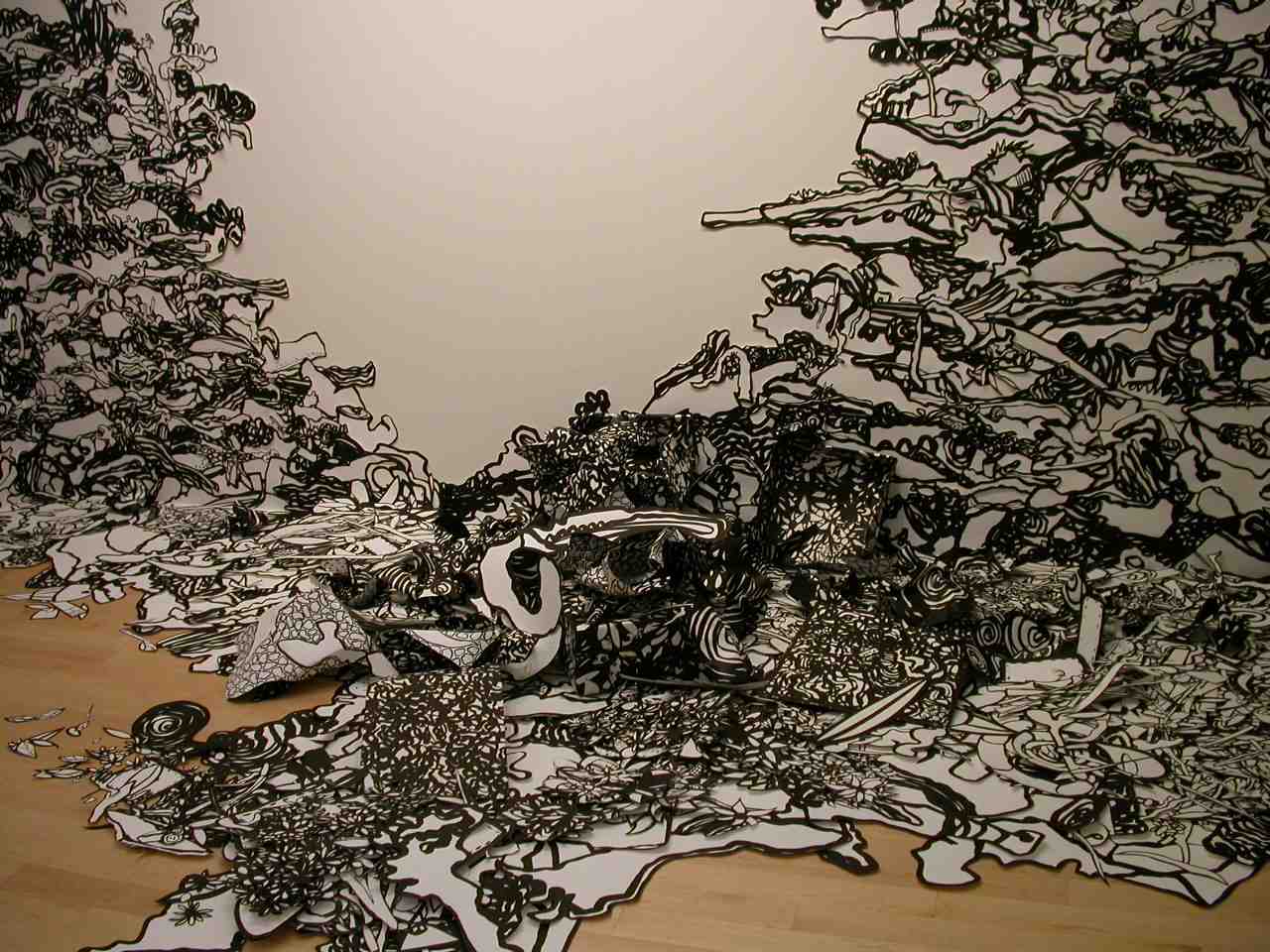
She’ll be working with students in her residency, and they will assist her in making the pieces. “It might be the last time I do it,” she said, referring to her black and white cut paper pieces. “I will change the piece every night and keep working on it (throughout the residency).
Technique alert (skip this paragraph is you’re not a technique wonk). Bowlby buys her paper online at Legion paper. She uses Coventry rag and Lenox 100 and Lanaquerelle. She buys them by the roll. Lenox comes in 72″x30 ft. and Lanaquerelle comes in 51″ x 30 ft. For her small dark drawings she paints with Speedball super black ink using a brush (double 0 or triple 0) and finishes in pen. (She uses larger watercolor brushes for the cut paper drawings.) She cuts with a special quilting scissors not an exacto blade, and she cuts on the black line (always making the black line thicker than she needs). Her pieces have organic shapes and some are very small–it takes control to cut with a scissors. “I’m very good at it,” she says.
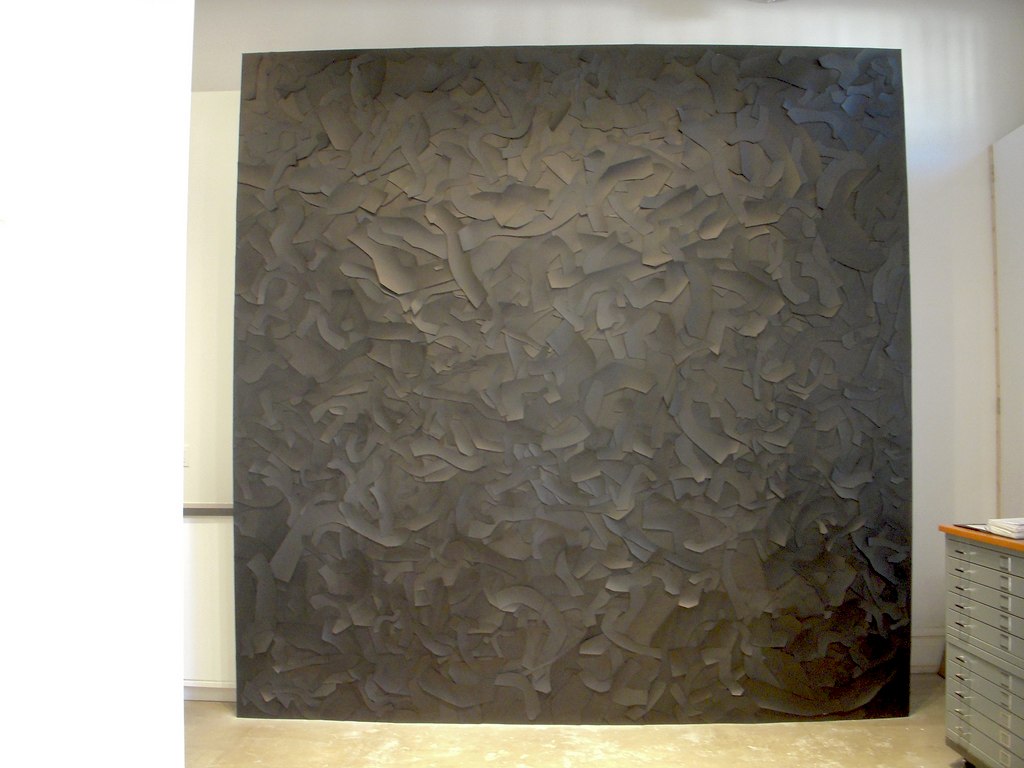
When you think who might be influences on this artist of baroque and labor intensive installations (along with even more baroque and labor intensive dark drawings) you don’t think of Keith Haring, but Bowlby says “Keith Haring was a huge influence on me. When I lived in New York, he was doing things in the subway. My black and white drawings on cut paper come from that.” Well, cartoony and linear are two words you could use to describe some of her black and white installations, so I’ll buy Keith Haring. Other influences? Jean Dubuffet’s L’Hourloupe sculptures, she says, and in the same breath, Philip Guston, Bernini, cave paintings and Elizabeth Murray.
“I want to make more sculptures that sit on pedestals,” she says, bucking the big-is-better trend. I remember seeing some great gloppy colored wax sculptures on pedestals by Bowlby in the late 1990s. They were loose and messy, a little erotic and even landscape-y. And I always thought they must have been fun to make. They were gorgeous to look at. I’m looking forward to seeing the new pedestal works, as well as more color from an artist who clearly loves to create order and beauty and have a little mess along the way.
See Snag at Michener through Jan 9 (disregard the website which says it’s over Jan. 2 — it was extended to Jan. 9). More photos at flickr.



